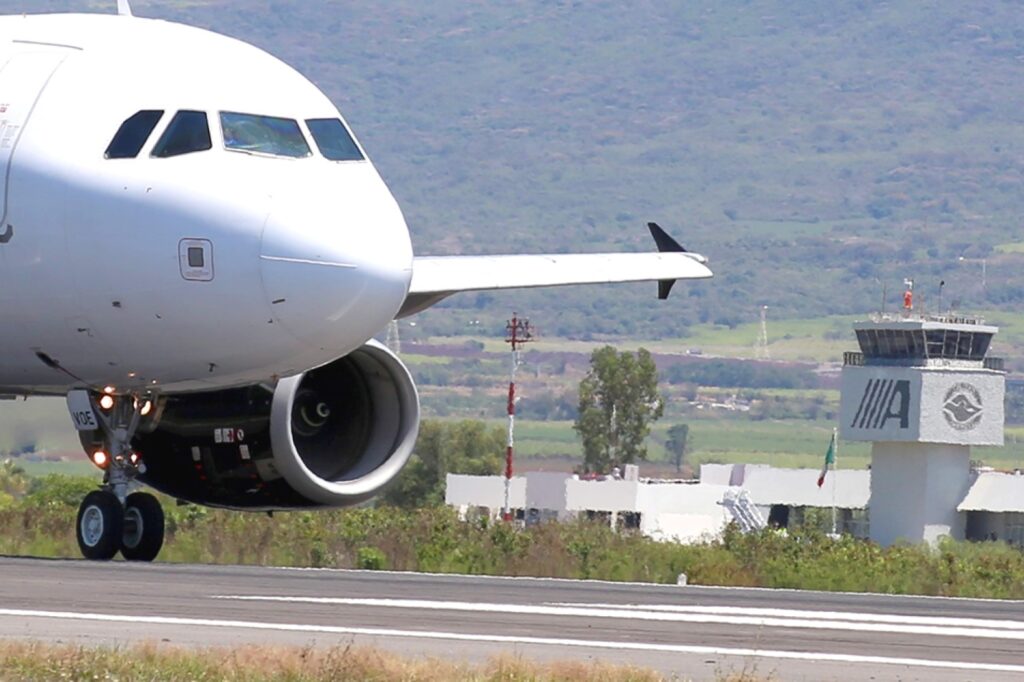As part of its commitment to the national and international goals of decarbonization from aviation industry, Airports and Auxiliary Services (ASA) managed to certify nine airports in Mexico, two of them of the Sea of Cortés Regionin level 1 of the Airport Carbon Accreditation Program.
The airports in the Sea of Cortez Region with this accreditation are the following airports LoretoBaja California Sur, and of TepicNayarit, Nayarit.

The other seven certified air terminals are Puerto Escondido, Ciudad del Carmen, Colima, Puebla, Ciudad Victoria, Tehuacán and Poza Rica.
"To achieve certification under the Airport Carbon Accreditation Program of the Airports Council International, ASA carried out a series of actions aimed at determining the operational limit of airports, data collection and calculation of annual emissions for the base year 2019 and 2022," the agency explained in a statement.
We recommend: Mexico's airline industry seeks solutions to reduce emissions
Airport Carbon Accreditation is the only institutionally endorsed global carbon management certification program for airports. It independently evaluates and recognizes airports' efforts to manage and reduce their carbon emissions through seven levels of certification:
Level 1: Mapping
Footprint measurement
- Determine the sources of emissions within the operational perimeter of the airport company.
- Calculate annual carbon emissions.
- Prepare a carbon footprint report.
Level 2: Reduction
Carbon management towards a reduced carbon footprint.
- Provide evidence of effective carbon management procedures.
- Show quantified emission reductions.
Level 3: Optimization
Third-party participation in carbon footprint reduction
- Expand the scope of the carbon footprint to include third-party emissions.
- Involve third parties in and around the airport.
Level 3+: Neutrality
Carbon neutrality for direct emissions through offsetting
- Offset the remaining emissions from all emissions over which the airport has control with high quality carbon credits.
Level 4: Transformation
Transforming airport operations and those of its business partners to achieve absolute emissions reductions
- Define a long-term carbon management strategy aimed at absolute emission reductions, in line with the objectives of the Paris Agreement.
- Demonstrate that you are actively encouraging third parties to reduce emissions.
Level 4+: Transition
Offsetting residual emissions with reliable offsets
- Offset residual carbon emissions over which the airport has control, using internationally recognized offsets.
Level 5
Level 5 is the highest level in the airport's carbon crediting program.
- Maintain a balance of zero net emissions in Scopes 1 and 2 and actively address Scope 3 emissions by strengthening the third-party engagement approach and offsetting residual emissions removals.
We recommend: How is aviation doing on its net zero emissions target? IATA presents report
A total of 572 airports worldwide are certified at one of the following levels Airport Carbon Accreditation Programof which 44 are from Mexico and 10 in the Sea of Cortés Region.
The certified air terminals in the states of Baja California, Baja California Sur, Nayarit, Sinaloa and Sonora are as follows:
Level 1
- Loreto
- Tepic
Level 2
- Tijuana
- La Paz
- San Jose del Cabo
- Culiacan
- Los Mochis
- Mazatlan
- Hermosillo
Level 3
- Mexicali

In the case of the Loreto and Tepic airports, which have just received their Level 1 accreditation, ASA emphasizes that the next objective is to plan how to reduce its carbon emissions in the coming years, in order to contribute to the global objectives of decarbonization and to Mexico's international commitments in the area of climate change.
The decentralized agency underlines that these initiatives are part of the Sustainability Policy established in 2023 and the Sustainability Strategy which it is developing to promote sustainable practices in the aviation sector in Mexico, Central America and Latin America.
Source: ASA


